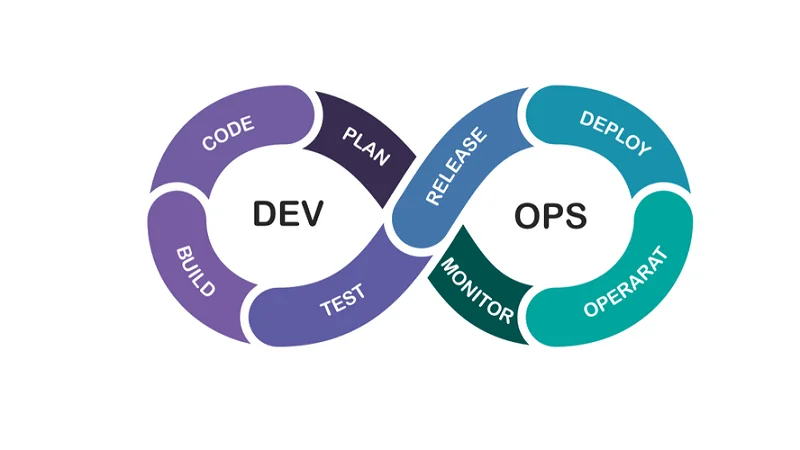After all, making bad information extra accessible and discoverable could value you dearly, doing more harm than good. A data fabric will make your metadata active by constantly querying and analyzing your metadata. These interactions are how your knowledge cloth identifies the connections and relationships inside your datasets. In reality, the topic remains to be debated by knowledge governance business experts regularly. “Data mesh is an approach that brings process and know-how together more simply and successfully to focus on the folks, process and technology,” Goetz says.
- “Data mesh is an strategy that brings course of and technology collectively extra easily and successfully to focus on the individuals, process and know-how,” Goetz says.
- The company’s accounts payable and generic ledger operations had been dealt with by decentralized regional providers facilities utilizing guide processes.
- This approach facilitates seamless data access, integration, and management, enabling customers to work together with information with out worrying about its underlying complexity or location.
- Augmented data catalog – AI-powered intelligent information catalog lets you find, understand and prepare all your information with AI-driven metadata discovery and information cataloging.
A knowledge mesh is an architectural strategy to information, which a data lake could be a half of. However, a central knowledge lake is more usually used as dumping ground for knowledge as it regularly is used to ingest data that doesn’t yet have a defined purpose. A data lake that lacks the suitable information high quality and information governance practices to supply insightful learnings. Since its uniquely metadata-driven, the abstraction layer of a knowledge cloth makes it simpler to model, integrate and question any information sources, construct knowledge pipelines, and integrate knowledge in real-time. A information material additionally streamlines deriving insights from information through better data observability and data quality by automating manual tasks across information platforms utilizing machine learning. This improves knowledge engineering productiveness and time-to-value for data customers.
The Means To Understand Information Mesh Advantages:
Data Mesh, with its decentralized, domain-oriented method, is particularly well-suited for organizations on the lookout for agility, innovation, and empowerment on the area level. This method presents real-time stock and gross sales insights to reduce stockouts and overstock conditions, enhanced customer understanding, and improved operational effectivity throughout on-line and offline channels. All knowledge merchandise have well-described syntax and semantics that observe commonplace naming conventions determined by the group. You can apply data mesh know-how for use cases that require third-party and public datasets. You can deal with external knowledge as a separate area and implement it within the mesh to ensure consistency with inside datasets.
Data fabric centralizes data administration, which can make it easier to enforce constant security practices throughout the complete organization. A unified information layer allows for the implementation of standard security measures, similar to encryption, access controls, and auditing, reducing the potential for inconsistencies in safety practices. So, a potential problem with knowledge governance in the mesh approach is maintaining consistent governance practices across totally different area groups. This requires strong collaboration and communication, as nicely as the establishment of organization-wide knowledge governance requirements for all domains. Data mesh allows area teams to take ownership and manage their information merchandise.

Data mesh promotes collaboration between domains by establishing clear interfaces and shared requirements for knowledge products. This makes it simpler to share, access, and leverage data throughout different components of the group, fostering cross-functional insights and innovation. Ultimately, the selection between information mesh and information material will rely upon which strategy aligns best together with your organization’s targets, assets, and strategic course. Data mesh is a new strategy coined by Zhamak Dehghani that advocates for decentralized information architecture.
In a knowledge mesh strategy, quite than relying on a centralized platform, an enterprise has access to numerous repositories. Each of those is dedicated to a particular business area or department, similar to procurement. That’s because, when you may have a greater deal with on the info that’s running your business, you’ll have the ability to perceive the context of what needs to be migrated or what might have to be consolidated in a transfer to the cloud. The information mesh framework may be easily scaled by companies as their knowledge management requirements change. The decentralized nature of knowledge mesh allows organizations to scale their information management efforts extra effectively. This is achieved by distributing obligations across domain groups, avoiding bottlenecks and single factors of failure.
With direct entry to the data they need, they can work extra autonomously and effectively, collaborate extra successfully, and iterate and experiment with information sooner. Domain-driven data refers back to the apply of organizing and managing knowledge in alignment with the specific domains or areas of experience inside a corporation. Business models or teams personal particular data collections and have responsibility for the standard, accessibility, and security of that knowledge. Data material is designed to scale along with your organization’s wants, accommodating rising volumes of data and evolving data types.
It continuously identifies and connects data from disparate functions to find unique, business-relevant relationships between the available data factors. The insight helps re-engineered decision-making, providing extra value via fast entry and comprehension than traditional data administration practices. Ensuring constant knowledge governance and compliance is a important profit of information material. It enforces insurance policies throughout all information sources and uses, sustaining data high quality, privateness, and regulatory compliance. Data mesh and information lake symbolize two distinct approaches to information architecture, each suited to completely different organizational needs and philosophies.
What’s Domain-driven Data?
It incorporates governance and security insurance policies to make sure data is managed and accessed in compliance with regulations and organizational requirements. This consists of elements like knowledge quality, privateness, lineage, and entry controls. Data fabric abstracts the underlying complexity of knowledge methods, providing users with a simplified view of the info panorama. This abstraction permits users to access and work together with information without having to understand the details of where and the way the information is saved.
A information mesh transfers data control to area consultants who create meaningful knowledge products within a decentralized governance framework. Data customers also request access to the information merchandise and seek approvals or modifications immediately from data homeowners. As a outcome, everyone will get faster entry to relevant knowledge, and sooner entry improves enterprise agility. While a data https://www.globalcloudteam.com/ mesh goals to unravel lots of the similar issues as an information fabric–namely, the problem of managing data in a heterogenous knowledge environment–it tackles the problem in a fundamentally completely different manner. Data mesh advocates for distributed, domain-based possession and custodianship of information. These knowledge products are extra simply managed and delivered on the domain level.
More From Cloud
But fortunately for you, certain patterns have emerged from the maw that may allow you to in your information path, including information materials and knowledge meshes. In the past, businesses would go all in on a single know-how vendor simply to deal with this linked data gap, which inevitably leads to making sure sacrifices. Even if the information is positioned in the same system supplier, it still fails to hook up with different modern or legacy methods in your enterprise. In contrast, a data lake skips proper to loading the uncooked supply system data into the information lake. There is no requirement to define structure or relationships between knowledge when you load it. This inherently makes knowledge lakes extra versatile, since there may be much much less pre-work involved in getting new information into the lake.
This additionally makes it attainable to separate your data from the purposes that include it. This autonomous information can then be accessed inside this interwoven material of knowledge itself, quite than counting on point-to-point integrations. Let’s dive into the nuts and bolts of how a knowledge material gets woven collectively within the first place.
Strengthened Security And Compliance
Despite the effectiveness of the data mesh structure, solely specialists could make use of it. In different words, information mesh is a high-code approach requiring developer experience and time. Data mesh as a concept took place with recent revolutions in software structure. The industry has trended towards breaking up monolithic providers into impartial microservices. However, this introduced a need to orchestrate, handle, and connect info and actions throughout microservices. By creating API integrations between these totally different microservices, they could keep linked and work collectively.

With data warehouses and knowledge lakes, you will get a full view of your replicated data panorama in one system. With a knowledge mesh, the API integrations are distributed across systems, so that you solely see the patterns folks have already created with the information mesh. Data governance is enforced through the possession and accountability of domain groups. Each group is liable for the standard, lineage, and metadata of their knowledge merchandise, guaranteeing that the data is well-documented and adheres to the organization’s data standards.
A enterprise area refers to a specific space of experience, duty, or focus inside a company. It could probably be a complete business unit or a specific division, like gross sales, or a group, similar to a staff of knowledge scientists working on synthetic intelligence (AI) and machine studying (ML) projects for the business. Ultimately, you may resolve your group should use both approaches—and many companies data mesh vs data fabric do. These are complementary approaches to making information more accessible so it can be used to create business worth, and they can be used together. With knowledge extra readily accessible and integrated, organizations can leverage advanced analytics, artificial intelligence, and machine learning to generate deeper insights, predict tendencies, and make more knowledgeable choices. Since each domain owns its knowledge, there’s a stronger sense of ownership and accountability.
Data cloth supplies a unified data platform that simplifies information integration, storage, processing, and access throughout organizations. Data mesh architecture is a decentralization strategy, which means knowledge is organized by a particular business area, with the goal of achieving coherence among a quantity of enterprise areas. This is especially a human-directed process that entails subject matter consultants in knowledge who tag info, construct guidelines and determine who the contributors are. These are the individuals who work on the info staff, they usually use their expertise to create the right fields that connect with the enterprise processes. The aim is to attempt to improve everyone’s understanding of how to devour information at a business stage or how to determine out what’s occurring inside your information that could be affecting your small business.